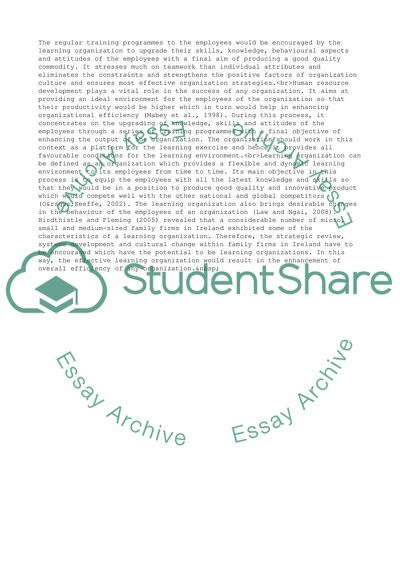Cite this document
(Learning Organization and Human Resource Development Case Study, n.d.)
Learning Organization and Human Resource Development Case Study. Retrieved from https://studentshare.org/management/1729776-human-resource-development
Learning Organization and Human Resource Development Case Study. Retrieved from https://studentshare.org/management/1729776-human-resource-development
(Learning Organization and Human Resource Development Case Study)
Learning Organization and Human Resource Development Case Study. https://studentshare.org/management/1729776-human-resource-development.
Learning Organization and Human Resource Development Case Study. https://studentshare.org/management/1729776-human-resource-development.
“Learning Organization and Human Resource Development Case Study”, n.d. https://studentshare.org/management/1729776-human-resource-development.


